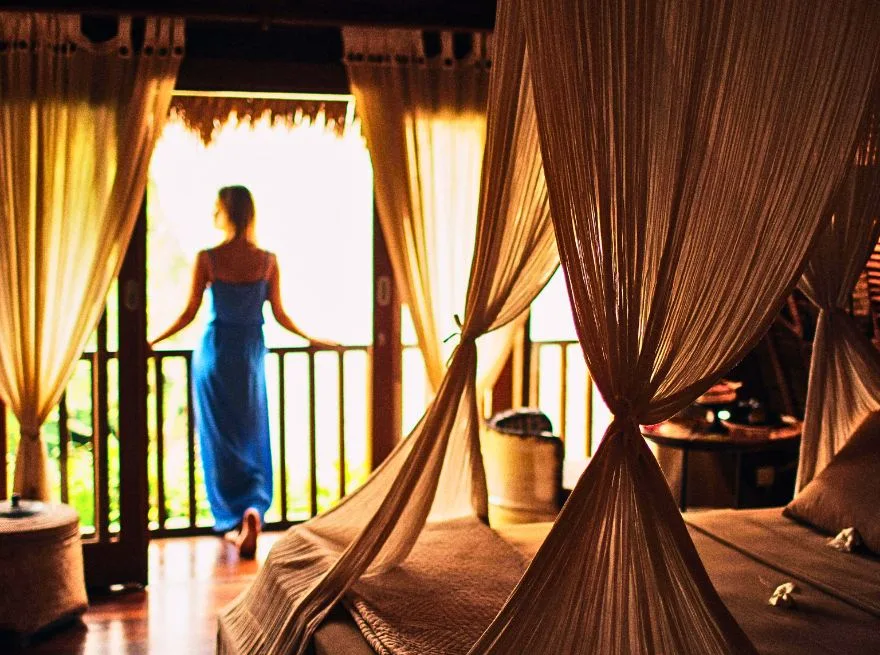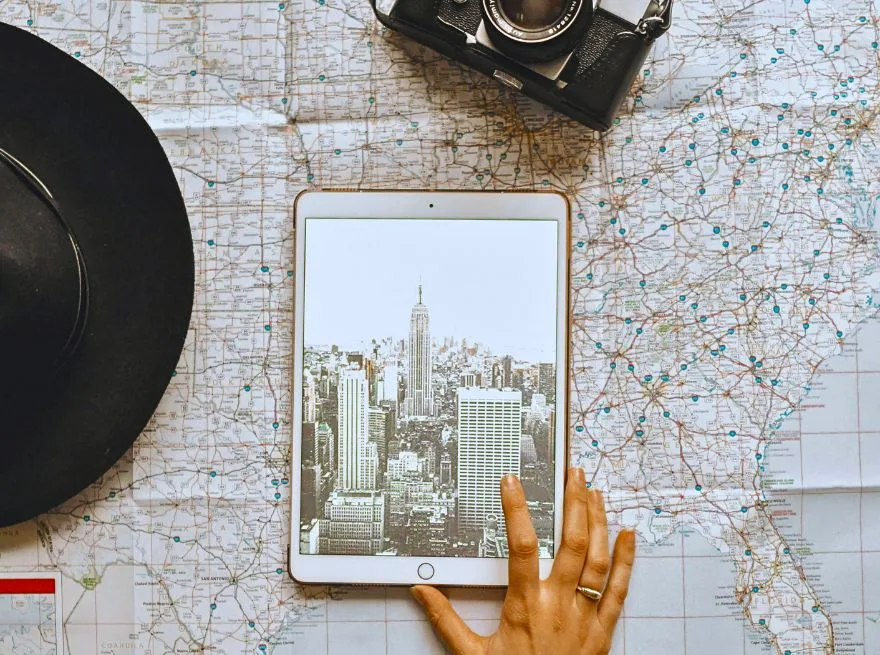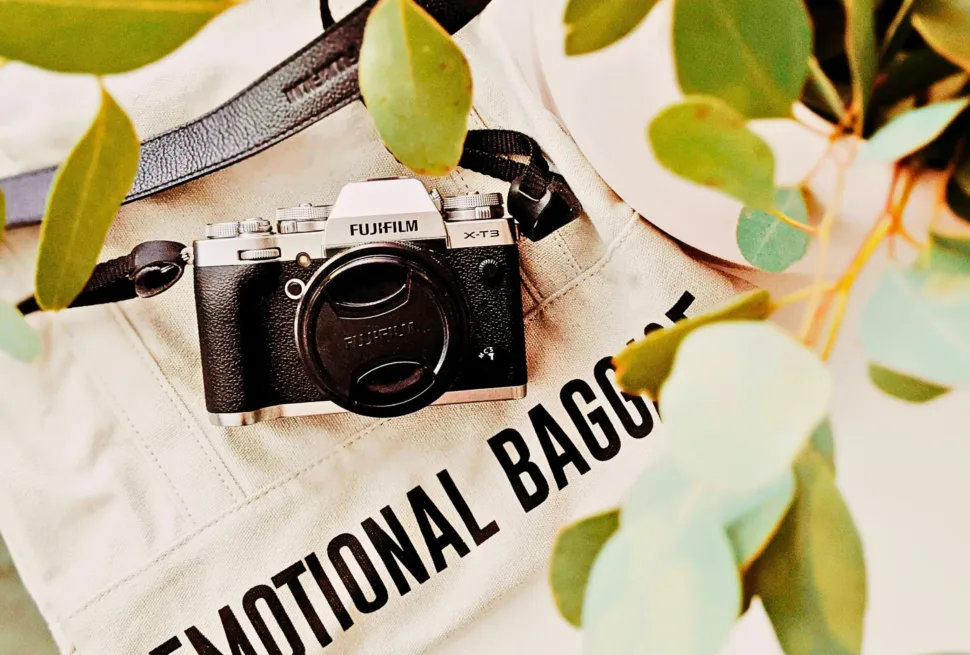Introduction: The Sovereign Sanctuary of Stillness
We are, all of us, eternal travelers. Whether across continents or simply through the shifting landscapes of a single day, our lives are defined by movement, transition, and the thrilling, yet often jarring, experience of leaving one place for arriving at another.
For those of us on the path of conscious living—the path of Inner Soaring—travel presents a profound, accelerated test. It strips away our comforting routines, dissolves the familiar boundaries of home, and deposits us into a vortex of sensory overload: the stale, recycled air of a pressurized cabin; the relentless bing-bong of airport announcements; the crushing awareness of a ticking clock governing our connection fate; the dizzying disorientation of a new timezone and a thousand unfamiliar faces. Travel, in essence, is a masterclass in losing control.
It is precisely in this state of necessary surrender that the most potent spiritual work can be done. The physical journey, from the moment you lock your front door to the moment you unlock your destination’s door, is the perfect metaphor for your internal journey. How you navigate the chaos of a security line is how you often navigate the chaos of your mind.
This guide is for every traveler who has felt their chest tighten before takeoff, who has struggled to sleep on a long-haul flight, who has stepped into a foreign city with nerves bristling like static. These simple mindfulness practices—breathing, grounding, and noticing—are small anchors, helping you navigate the vast ocean of movement with peace.
Your breath is your anchor. Your body is your home. Your awareness is your light. Let’s pack these essentials for the road ahead, ensuring that wherever you go, your truest self always arrives first.
The Weight We Carry: Understanding Travel Anxiety
Before we dive into techniques, let’s honor what we’re actually experiencing. Travel anxiety isn’t weakness or overthinking—it’s a completely natural response to genuine challenges. You’re entrusting your life to metal tubes soaring miles above earth. You’re navigating foreign systems where you can’t read the signs. You’re exhausted, jet-lagged, possibly alone, and far from anything familiar. Your nervous system is doing exactly what it evolved to do: stay alert to potential threats.
1. The Illusion of Lost Control
Our daily lives are built upon layers of predictability. When we travel, we willingly hand over control to external systems: the airline’s schedule, the efficiency of customs, the skill of the pilot. The moment we feel trapped—in a long queue, in the middle of a flight, or facing a language barrier—the limbic system, the seat of emotional reaction, sounds the alarm. We mistake physical constraint for spiritual constraint, forgetting that our inner landscape remains eternally free.
This loss of agency is the primary fuel for travel-related anxiety. We are constantly scanning for threat because we are operating outside our established safety parameters. The mind races, trying to solve a thousand hypothetical problems—What if I miss my connection? What if my bag is lost? What if I get sick?—and this hypervigilance drains our vital energy, leaving us exhausted before the adventure even begins. The anxious traveler attempts to control the uncontrollable, a futile exercise that only deepens the feeling of powerlessness.
The core challenge here is a misunderstanding of freedom. True freedom is not the absence of external constraints, but the capacity to choose your internal response within those constraints. The airport gate might be closed, but your breath remains open. The flight might be delayed, but your attention can be consciously shifted to the now. Releasing the need for external control allows the nervous system to finally relax its posture of defense.
2. Sensory Overload and The Collapse of Boundaries
Airports and transport hubs are environments designed for maximum efficiency and minimum peace. They are loud, bright, crowded, and filled with novel smells and textures. This relentless stream of novel, often conflicting, information overwhelms the nervous system. Our energetic fields, which are accustomed to the contained, predictable walls of our home, suddenly collide with thousands of others. This energetic ‘clutter’ makes us feel exposed, vulnerable, and deeply tired.
The traveler often reacts by walling themselves off—hunching, darkening, and internally cursing the noise—a reaction that only further isolates them from their own source of peace. The body, unable to filter the barrage of stimuli, tenses up, creating physical pain that mimics the mental distress. The subtle sound of a passenger coughing, the smell of a nearby food vendor, the constant shuffle of luggage wheels—each stimulus is a tiny stressor, which, when aggregated, creates a state of chronic low-level agitation.
The solution is not to block out the world—which is impossible—but to change the way we process it. We must move from reactive filtering (labeling inputs as ‘good’ or ‘bad’) to passive receiving (simply acknowledging the input). This is the shift from “This noise is ruining my peace” to “I notice a loud sound.” This small linguistic and mental adjustment is the difference between anxiety and presence.
3. The Tyranny of the Schedule
Modern travel is an exercise in time-pressure. We are constantly transitioning from “I must be here by” to “I must be there by,” compressing the natural rhythm of life into tight, unforgiving windows. This preoccupation with the future—the destination, the check-in time, the boarding time—pulls us violently out of the present moment.
We treat the entire journey as merely an obstacle to overcome before the real experience begins. Yet, by doing so, we miss the hundreds of opportunities for quiet observation, simple gratitude, and grounded presence that exist in the now. This future-focus creates a constant, low-level cortisol bath, eroding our emotional resilience. Our minds become two steps ahead of our bodies, and this energetic misalignment is experienced as stress.
The irony is that the rush to the future only makes the present time feel longer and more agonizing. When we are fully present in the moment—whether waiting in a line or seated on a plane—time often seems to move faster, or at least with less friction. The practice of being here now is the most effective time management tool available to the traveler.
The answer is not to fight the chaos, but to establish an inner architecture of peace that the chaos cannot penetrate. This is where the three pillars—Breathing, Grounding, and Noticing—become our essential, non-negotiable carry-on items. They are the portable tools that rewire the anxious traveler’s brain back into a state of calm, centered awareness, transforming every transition point into a mini-meditation.
The Airport: A Meditation Hall in Disguise
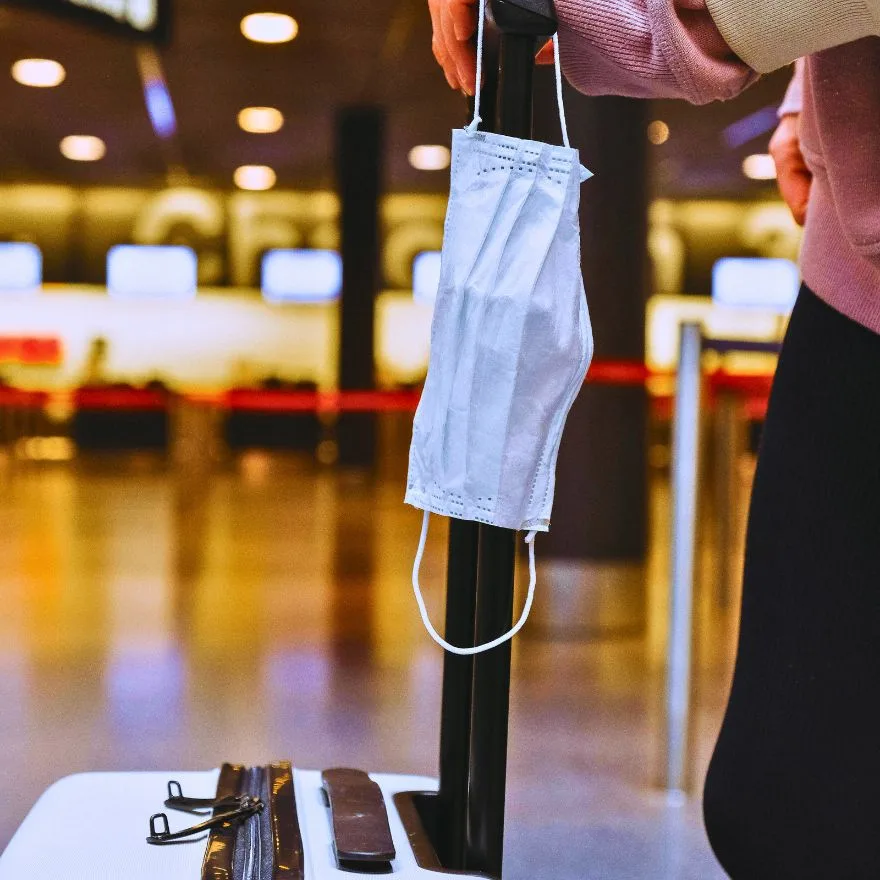
Airports are my unexpected teachers. I used to view them as necessary evils—fluorescent purgatory between real destinations. Now I see them as perfect practice grounds for mindfulness. The sensory overwhelm, the crowds, the waiting, the uncertainty—these are precisely the conditions that demand present-moment awareness.
When you arrive at the airport, before you even check in, pause. Find a relatively quiet corner (I favor spots near large windows) and do what I call the “Arrival Acknowledgment.” Place one hand on your heart and one on your belly. Take three deep breaths and silently recognize: “I have arrived at this moment. I am exactly where I need to be right now.”
This sounds simple, almost too simple. But in that recognition, you’re interrupting the forward-leaning anxiety that characterizes most travel. You’re not yet on the plane. You’re not yet at your destination. You’re here, and “here” is enough.
The Security Line as Meditation Practice
Security lines offer a masterclass in patience and presence. Instead of tensing against the wait, try this practice I learned from a Buddhist monk I met in a Kathmandu airport. He was in line ahead of me, perfectly serene despite the chaos, and when I asked his secret, he smiled and said, “I walk slowly, even when standing still.”
Here’s the practice: Stand with both feet planted firmly. Feel your weight distributed evenly. With each breath, scan your body from feet to head, releasing tension wherever you find it. Your jaw might be clenched—soften it. Your shoulders might be hunched—lower them. Your breath might be shallow—deepen it.
As the line moves forward, move mindfully. Feel each step. Notice the weight transfer from one foot to the other. You’re not just waiting to get through security. You’re practicing embodied presence. The line becomes a walking meditation, and suddenly those fifteen minutes aren’t lost time—they’re found moments.
In Flight: Breathing Through Turbulence
Flying amplifies everything. The recycled air, the confined space, the lack of control—our nervous systems respond accordingly. But the very environment that challenges us also provides the perfect conditions for deep practice.
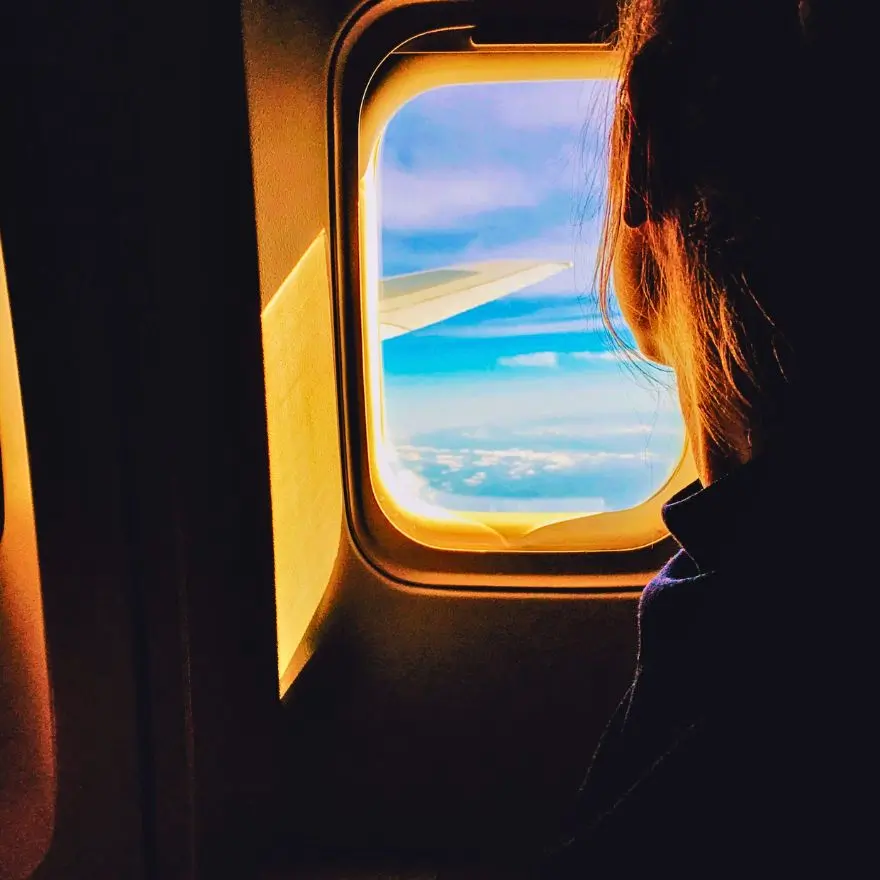
The 4-7-8 Breath: Your Pocket Tranquilizer
This practice, popularized by Dr. Andrew Weil, is often called a “natural tranquilizer” for the nervous system. It works by ensuring that the exhalation is significantly longer than the inhalation, stimulating the vagus nerve and activating the parasympathetic “rest and digest” branch of the autonomic nervous system. This is your go-to technique for moments of acute anxiety: a turbulent takeoff, waiting in a confusing line, or the spike of panic when you think you’ve misplaced your passport. The prolonged exhale is what actively dumps the carbon dioxide and signals to the brain that the threat has passed.
Here’s how it works:
- Preparation: Exhale completely through your mouth, making a gentle whoosh sound. Get all the stale air out.
- Inhale (4): Close your mouth and inhale quietly through your nose for a slow, steady count of four. Feel the diaphragm expanding.
- Hold (7): Hold your breath for a count of seven. This prolonged hold allows for increased oxygen-carbon dioxide exchange.
- Exhale (8): Exhale completely through your mouth, making the whoosh sound, for a count of eight. Really empty the lungs, letting the air rush out.
- Repeat: Repeat the cycle four times.
During turbulence, when every bounce and dip triggers alarm, this breath becomes an anchor. I’ve done it through storms over the Pacific, through unexpected drops, through moments when I genuinely wondered if I’d made a terrible mistake by boarding. Each time, the 4-7-8 breath brings me back to center.
A tip I’ve learned: if holding for seven counts creates more anxiety rather than less, adjust the ratios but keep the exhale longest. Try 3-5-6 or 2-3-4. The key is the extended exhale, not perfection.
Application in Travel:
- Pre-Flight Anxiety: Practice this while sitting at the gate, focusing only on the numbers and the sensation of the air. It interrupts the frantic loop of “what-if” thoughts, physically lowering your heart rate.
- Turbulence: Instead of tensing, let the counting be your focus. The rhythmic internal count provides a sense of control and stability precisely when the external environment is unstable. The whoosh sound of the exhale acts as a physical release of tension, a gentle surrender to the moment.
- Airport Transfer Rush: If you find yourself having to sprint between gates, take one full 4-7-8 cycle as soon as you stop moving. It immediately downshifts the adrenaline surge, preventing a stress hangover and allowing you to assess the next logistical step from a place of calm, rather than panic.
Box Breathing (Sama Vritti): The Layovers Lifeline
Also known as Equal Breathing, this technique brings balance and coherence to the nervous system. Its simplicity makes it ideal for maintaining a steady, even-keeled state over long periods, such as during a lengthy layover or a monotonous long-haul flight. The equal phases mirror the stability and balance you are seeking to cultivate internally, creating a perfectly measured rhythm that synchronizes the heart, lungs, and mind.
The Practice:
- Inhale (4): Inhale slowly through your nose for a count of four.
- Hold (4): Hold your breath at the top for a count of four.
- Exhale (4): Exhale slowly through your nose for a count of four.
- Hold (4): Hold your breath at the bottom (lungs empty) for a count of four.
- Repeat: Continue this cycle for several minutes, mentally visualizing a perfect square or box, connecting each segment.
Application in Travel:
- The Layovers Limbo: Layovers are often the hardest part of the journey—you’re neither here nor there, and the temptation is to pull out your phone and numb the wait. Instead, find a quiet corner, sit upright, and engage in 10 minutes of Box Breathing. It is an active way of resetting your biological clock and calming the restlessness that comes from being in perpetual transit. This practice anchors your awareness, preventing the mind from spiraling into impatience or boredom.
- Settling into the Seat: Once seated on the plane, before the cabin doors close, use Box Breathing to consciously move from the external frenzy of boarding to the internal quiet of the flight. This is a moment of conscious transition, a ritual of claiming your personal space, setting the intention for a calm journey.
- Before Sleep/Arrival: The balanced nature of the breath calms the agitated mind without dulling it, making it perfect for unwinding before attempting to sleep on the flight or for centering yourself just before the cabin lights come on for arrival. The evenness prepares the body for a smooth transition, minimizing the shock of a sudden change in activity.
The breath is not just a tool; it is a declaration of presence. By consciously working with it, you transform your physical act of breathing into a spiritual practice of being, ensuring that your inner peace remains unburdened by the external luggage of your journey. The breath is the thread of consciousness that keeps your inner world whole, no matter how fractured the external journey may seem.
The Five Senses Grounding Technique
When anxiety escalates mid-flight—when your mind is spinning stories about engine failure or disaster—the most effective intervention is radical present-moment awareness. This is where the five senses technique becomes invaluable.
Look around and identify five things you can see. Be specific. Not just “seat” but “the navy blue fabric on the seat ahead with a small stain near the headrest.” This level of detail forces your mind out of its fear narratives and into sensory reality.
Now four things you can touch. Feel the armrest texture. Notice your seatbelt against your lap. Run your fingers over the in-flight magazine’s glossy cover. Touch your own hands together and notice the temperature.
Three things you can hear. The engine hum. Someone coughing rows behind you. The rustle of someone’s snack bag opening.
Two things you can smell. The coffee from the galley. Your own hand lotion.
One thing you can taste. Even if it’s just the lingering taste of water or gum.
I’ve guided myself through this practice on dozens of flights, and I’ve quietly shared it with anxious seat neighbors who’ve noticed my calm during rough patches. Every single time, it works. Not because it eliminates turbulence or danger, but because it returns us to what’s actually happening right now—which is almost always less catastrophic than our minds predict.
Anchoring to the Earth – Grounding Practices
While breathing shifts your internal state, grounding practices immediately tether your attention to the concrete reality of your physical body and immediate environment. Travel, particularly air travel, is fundamentally ungrounding—you are literally suspended in the air, disconnected from the earth and often your own natural rhythms. Grounding is the antidote to this disembodied feeling, a way of reminding yourself: “I am here, in this body, right now.”
Physical Anchoring: The Seat as a Sanctuary
The first and simplest grounding technique is leveraging the physical connection you have—specifically, your seat. Whether it’s the plastic chair at the gate or the deeply-cushioned car seat, your seat is your immediate, tangible anchor. This practice uses proprioception—the body’s sense of its position and movement—to bring you back into present awareness.
The Practice:
- Feel the Gravity: Close your eyes or soften your gaze. Direct your entire awareness to your lower body. Intend to “sink” into the seat.
- Sense the Contact: Notice the sensation of your thighs, your buttocks, and your lower back pressing against the seat material. Feel the weight of your body being supported. Don’t just think “I am sitting”; actually feel the fabric, the slight indentations, the warmth, the pressure points. If you are sitting on a cushion or a blanket, notice the texture of that specific layer.
- Root the Feet: Bring your attention to your feet planted firmly on the floor or footrest. Wiggle your toes inside your shoes. Feel the solid, non-moving ground beneath them. Imagine your legs are massive, heavy oak roots descending deep into the earth’s core, even through the thin aluminum floor of the aircraft. Feel the difference between the hard heel and the softer ball of your foot.
- Embrace the Heaviness: Allow yourself to become heavy, settled, and completely supported. The seat is holding you. The plane is holding you. The earth is holding the plane. You do not need to hold yourself up. Every bump or movement then becomes a confirmation of your presence, not a threat to it. This act of conscious surrender releases stored muscle tension, particularly in the shoulders and jaw.
Application in Travel:
- The In-Flight Discomfort: When restlessness hits during a flight, or when your legs are aching, consciously ‘sink’ into your seat using this technique. This practice paradoxically relieves tension because it shifts your effort from fighting the seated position to accepting it, moving from resistance to rest. It gives your mind a concrete, immediate task to focus on instead of scanning for discomfort.
- Security Checkpoint Line: This is a perfect place for subtle grounding. Instead of focusing on the people in front of you, focus on the soles of your feet connecting to the cold, hard floor. Feel your weight evenly distributed. Lift your toes and then plant them back down. This subtle movement, coupled with attention to the sensation, makes the wait a moment of stillness rather than a source of mounting impatience.
Arrival: Grounding in New Territory
Landing in a new place carries its own particular disorientation. Different air, different sounds, different energy. Your internal compass spins, trying to recalibrate. This is when grounding practices become essential.
As soon as you’re settled in your accommodation—before you unpack, before you plan your adventures—do this arrival ritual. It’s saved me from jet lag spirals and helped me genuinely arrive in a place rather than just physically occupy it.
The Four Directions Check-In
If possible, step outside. If not, stand near a window. Face each direction—north, south, east, west—and take a few breaths facing each one. As you face each direction, notice what you sense. What’s the quality of light? What sounds reach you? How does the air feel?
This isn’t about accuracy—you don’t need to know precisely which direction is which. It’s about orienting yourself to this new place, acknowledging that you’re in a different position on the planet. You’re recognizing your relationship to this geography.
After you’ve faced all four directions, place both hands on the ground or floor. If you’re outside, touch the earth directly. Say silently or aloud: “I am here. I have arrived. This ground holds me.”
I learned a version of this from an indigenous guide in New Zealand, who explained that her people always acknowledge the land when arriving somewhere new. It’s not just cultural tradition—it’s practical wisdom. When we recognize where we are, we calm the disoriented parts of ourselves.
Night Arrivals: When Everything’s Too Much
Late-night or early-morning arrivals are particularly challenging. You’re exhausted, possibly anxious about navigating in the dark, and your circadian rhythm is thoroughly confused. This is when the simplest practices are most powerful.
In your accommodation, before attempting sleep, do the “Safe Space” practice. Sit or lie down and scan the room with your eyes. Notice the door, the windows, the furniture. This is gathering safety information—your nervous system needs to know where you are and that you’re secure.
Then place both hands on your heart center. Feel your heartbeat. Feel your chest rising and falling. Say to yourself, “I am safe. I am exactly where I need to be. This moment is enough.”
Even if you don’t fully believe it, the words matter. You’re speaking directly to your nervous system in the language it understands: reassurance, presence, acknowledgment.
Dealing with Disruptions: The Unexpected as Practice
Flight delays. Lost luggage. Missed connections. Wrong turns in unfamiliar cities. These disruptions aren’t obstacles to mindfulness practice—they are the practice.
I learned this lesson definitively during a trip that went spectacularly wrong. My flight from Delhi to Ladakh was canceled three times over two days. I’d booked accommodation that I couldn’t reach without flying. I was exhausted, frustrated, and increasingly anxious. On the third cancellation, I felt myself spiraling.
That’s when I remembered something a Vipassana teacher had told me: “Resistance to what is creates suffering. Acceptance of what is creates peace.” I stopped fighting reality. I found a quiet corner of the Delhi airport and sat down. I acknowledged: this is happening. I cannot control it. What I can control is my response.
The RAIN Technique for Travel Challenges
RAIN is an acronym for a mindfulness practice that’s particularly effective during travel disruptions. Here’s how it works:
Recognize: Name what’s happening. “My flight is delayed. I feel frustrated and anxious.” Don’t judge it—just name it clearly.
Allow: Let the experience be exactly as it is. Don’t try to push away the frustration or convince yourself you shouldn’t feel it. Allow it space.
Investigate: Get curious about the experience. Where do you feel frustration in your body? What thoughts accompany the anxiety? What’s underneath the initial emotion?
Nurture: Offer yourself compassion. Place a hand on your heart. Speak to yourself as you would a dear friend: “This is really hard. It’s okay to feel upset. You’re doing your best.”
When I applied RAIN during that Delhi airport ordeal, something shifted. The situation didn’t improve immediately—I still had to wait another full day for a flight—but I stopped suffering additional anguish through resistance. I found a hotel near the airport, treated myself to a good meal, and turned the delay into an unexpected rest day. The frustration was there, but it wasn’t consuming me.
The Noticing Practice: Presence as the Journey
Beyond specific techniques for challenging moments, there’s an overarching practice that can transform your entire travel experience: radical noticing. This is what mindfulness truly is—paying attention, on purpose, without judgment.
During any moment of travel, you can ask yourself: “What am I noticing right now?”
In the taxi from the airport: the driver’s ornament hanging from the mirror, the unfamiliar music on the radio, the smell of different gasoline, the architecture passing by the window.
In a restaurant: the texture of unfamiliar food, the melody of the language around you, the gesture of the server, the taste of local water.
Walking through streets: the quality of light, the pattern of cobblestones, the faces of strangers, the temperature shift between sun and shade.
This isn’t about documenting or remembering for later. It’s about being fully present for the experience unfolding now. When you notice—truly notice—you’re not somewhere else in your mind. You’re here, and “here” is the only place where life actually happens.
I’ve had more profound travel experiences during simple moments of noticing than during famous landmarks or planned adventures. A sunset witnessed fully from a bus window. The laugh of children playing in an alley. The gesture of a grandmother arranging fruit at a market stall. These moments, when met with complete presence, become luminous.
Creating Your Personal Practice: What Works for You
Everything I’ve shared comes from my own experimentation and learning. These techniques work for me, but mindfulness isn’t one-size-fits-all. The invitation is to try different practices and notice what resonates with your particular nervous system and temperament.
Some people find breath counting calming; others find it makes them more anxious. Some travelers love walking meditation; others prefer stillness. Some need longer practices; others benefit most from micro-moments of mindfulness scattered throughout the day.
Start with one technique that intrigues you. Practice it during a short trip—even just a day trip or commute. Notice what happens. If it helps, keep it. If it doesn’t, try something else. Build your personal toolkit gradually.
The Deeper Journey: Why This Matters
These mindfulness practices aren’t just stress management techniques, though they certainly help with stress. They’re invitations to a fundamentally different way of experiencing travel—and by extension, life itself.
When we rush through airports, anxiously anticipating destinations, we miss the journey. When we resist delays and disruptions, we suffer twice—once from the circumstance and again from our resistance. When we move through the world on autopilot, consumed by planning and worrying, we miss the very experiences we traveled to have.
Mindfulness in travel is training for presence in life. The airport is just the classroom. The skills you develop managing flight anxiety serve you in every challenging situation. The presence you cultivate noticing unfamiliar streets teaches you to see the wonder in familiar ones.
Every traveler I’ve met who’s integrated mindfulness into their journeys reports the same thing: travel becomes richer, challenges become more manageable, and the line between “getting there” and “being there” dissolves. The whole journey becomes the destination.
Beginning Right Where You Are
You don’t need to wait for your next big trip to start. You don’t need to master meditation or become a mindfulness expert. You simply need to begin, right where you are, with whatever journey is ahead of you.
Maybe it’s a flight next week. Maybe it’s tomorrow’s commute. Maybe it’s the walk from your front door to your car. Every journey is an opportunity to practice presence, to return to breath, to notice what’s actually happening rather than what you’re imagining.
The next time you travel—whether across the world or across town—try one thing from this guide. Take three conscious breaths before you start. Notice five things with your senses. Acknowledge when you arrive. Just one small practice.
And then notice what changes. Not in your circumstances, but in your experience of them. That’s where the real journey happens—not in the external movement across borders, but in the internal shift from resistance to presence, from anxiety to awareness, from going through the motions to actually being there.
The breath between borders isn’t empty space. It’s where we find ourselves, over and over again, in the only moment that ever exists: this one. Safe travels, friends. And more importantly, present travels.

